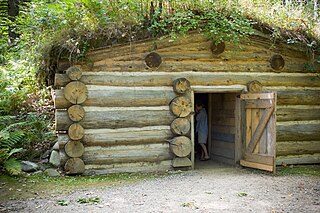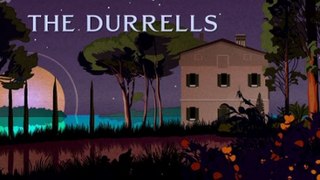
Historical reenactment is an educational or entertainment activity in which mainly amateur hobbyists and history enthusiasts dress in historical uniforms and follow a plan to recreate aspects of a historical event or period. This may be as narrow as a specific moment from a battle, such as a reenactment of Pickett's Charge presented during the 1913 Gettysburg reunion, or as broad as an entire period, such as Regency reenactment.

Shipley is a historic market town and civil parish in the City of Bradford, West Yorkshire, England.

How the Other Half Lives: Studies among the Tenements of New York (1890) is an early publication of photojournalism by Jacob Riis, documenting squalid living conditions in New York City slums in the 1880s. The photographs served as a basis for future "muckraking" journalism by exposing the slums to New York City's upper and middle classes. They inspired many reforms of working-class housing, both immediately after publication as well as making a lasting impact in today's society.

The 1900 House is a historical reenactment reality television series made by Wall to Wall/Channel 4 in 1999. The programme features a modern family attempting to live in the way of the late Victorians for three months in a modified house. It was first broadcast on Channel 4 in the United Kingdom and PBS in America.

American Civil War reenactment is an effort to recreate the appearance of a particular battle or other event associated with the American Civil War by hobbyists known as Civil War reenactors, or living historians.

The Edwardian Country House is a British historical reenactment reality television miniseries produced by Channel 4. First aired weekly in the UK beginning in April 2002, it was later broadcast in the United States on PBS stations as Manor House in 2003, where extra footage was added. It is third in a series of historical reality shows produced by Channel 4, preceded by The 1900 House and The 1940s House.

Wall to Wall Media, part of Warner Bros. Television Studios UK, is a television production company that produces event specials and drama, factual entertainment, science and history programmes for broadcast by networks in both the United Kingdom and United States. Its productions include Who Do You Think You Are?, New Tricks, Child Genius, and Long Lost Family.

Kabel Eins is a German free-to-air television channel that was launched on 29 February 1992 as Der Kabelkanal. It is owned by ProSiebenSat.1 Media AG. It is largely known for airing classic American films as well as TV series and documentaries. It is considered to be a sister channel of ProSieben.

Coal House is a Welsh television series made by Indus Films for BBC Wales, and broadcast on BBC One Wales, with a subsequent UK wide repeat of both series on BBC Four. Series 1 was set in the depressed economic coalfields of 1927. Series 2 was set in 1944 as World War II draws to a close; it was broadcast on BBC across the UK from October 2009.

The 1940s House is a British historical reenactment reality television series made by Wall to Wall/Channel 4 in 2001 about a modern family that tries to live as a typical middle-class family in London during The Blitz of World War II. The program was broadcast on Channel 4 in the United Kingdom in 2001, and in 2002 on PBS in the United States, ABC Television in Australia, and TVNZ in New Zealand. The series was narrated in the UK by Geoffrey Palmer.

ZDFneo is a German free-to-air television channel, programmed for an audience aged 25 to 49 to complement the primarily older-skewing main channels of public broadcasters ZDF and ARD. It replaced ZDF's documentary channel ZDFdokukanal on 1 November 2009.

The Forest History Center is part of the Minnesota Historical Society's network of historic sites and museums. Located in Grand Rapids, Itasca County, Minnesota, on wooded acreage adjoining the Mississippi River, the Forest History Center provides learning experiences about the forests, logging industry, and forest conservation. The historical and changing relationship between the people and the forest is displayed through exhibits and films, demonstrations, a living history lumber camp, an original 1934 fire tower, and nature trails. The Forest History Center has regular special events, and offers various programs for school field trips.
The GC is a New Zealand reality television series that premiered on TV3 on 2 May 2012 in New Zealand. The series follows the lives of a group of Māori living in Gold Coast, Queensland.
Back in Time for... is a British factual entertainment television series produced by Wall to Wall and broadcast on BBC Two from 17 March 2015 to 23 June 2022. Each series takes one "typical" family or multiple individuals relating to the topic and immerses them in life of past decades.

The Durrells is a British comedy-drama television series loosely based on Gerald Durrell's three autobiographical books about his family's four years (1935–1939) on the Greek island of Corfu. It aired on ITV from 3 April 2016 to 12 May 2019. The series is written by Simon Nye, directed by Steve Barron and Roger Goldby, and produced by Christopher Hall. Lee Durrell, Gerald Durrell's widow and director of the Durrell Wildlife Conservation Trust, acted as consultant. The series was partly filmed on location in Corfu, as well as at Ealing Studios and Twickenham Studios in London.

Grace Beside Me is an Australian fantasy drama television series for children which premiered on NITV on 16 February 2018 and later aired on ABC Me. The series is based on the novel Grace Beside Me, by Sue McPherson, and was filmed in the Scenic Rim Region in South East Queensland. The television adaptation was produced by a team composed entirely of women, including Aboriginal screenwriters.

Clementina "Kit" Caroline Anstruther-Thomson was a Scottish author and art theorist. She was known for writing and lecturing on experimental aesthetics during the Victorian era. Her collaboration with Vernon Lee in the 1890s inspired Lee's growing interests in the psychological aspect of aesthetics later in her career.
BBC Two's historical farm series are five documentary series first broadcast on BBC Two from 2005 to 2013. They illustrate the lives of people: farmers, labourers, fishermen, housewives, etc. in a variety of historical contexts. Historians and archaeologists play the parts of ordinary people and live and work immersed in the time specified. The team perform the everyday crafts such as hunting, gathering, sowing and reaping as well as experimenting with more specialised work like blacksmithing, woodcutting and mining under the eyes of an experienced tutor. Each series has taken place at a public living history site that provides external in-period experts, experience, and flavour. The Wartime Farm series includes conversations with men and women who remember the time. All were produced by David Upshal for Lion Television.

The Haunting of Hill House is an American supernatural horror drama television miniseries created and directed by Mike Flanagan, produced by Amblin Television and Paramount Television for Netflix, and serves as the first entry in The Haunting anthology series. It is loosely based on the 1959 novel of the same name by Shirley Jackson. The plot alternates between two timelines, following five adult siblings whose paranormal experiences at Hill House continue to haunt them in the present day, and flashbacks depicting events leading up to the eventful night in 1992 when the family fled from the mansion. The ensemble cast features Michiel Huisman, Elizabeth Reaser, Oliver Jackson-Cohen, Kate Siegel, and Victoria Pedretti as the siblings in adulthood, with Carla Gugino and Henry Thomas as parents Olivia and Hugh Crain, and Timothy Hutton appearing as an older version of Hugh.

The 1900 Island is a Welsh television series produced by Wildflame Productions, made for BBC Wales and first broadcast on BBC One Wales, with a subsequent UK wide broadcast on BBC Two from 10 June 2019. The series was filmed on the island of Llanddwyn, Anglesey, Wales, recreating the life of a fishing village at the turn of the 20th-century.


















